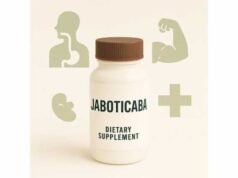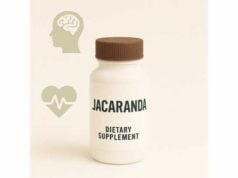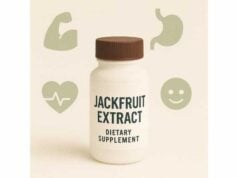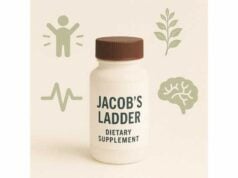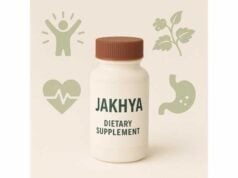
Java ginger—better known to botanists as Curcuma xanthorrhiza (temulawak)—is a rhizome from Indonesia with a long history in Javanese and wider Southeast Asian herbal practice. It is not the same as common kitchen ginger or turmeric, though it belongs to the same Zingiberaceae family. Traditionally, people reach for Java ginger to ease post-meal heaviness, support bile flow, and maintain liver comfort. Modern analyses highlight two notable constituents: xanthorrhizol (a sesquiterpenoid abundant in Java ginger) and a smaller share of curcuminoids. Together they contribute antioxidant, cholagogue (bile-moving), and antimicrobial actions observed in preclinical studies. While high-quality human trials remain limited compared with turmeric, there is enough historical use and early-stage evidence to make Java ginger a considered option for mild digestive complaints—when used at appropriate doses and with attention to safety. This guide explains what Java ginger is, how it appears to work, practical dosing ranges, who should avoid it, and how to choose a quality product.
Quick Overview
- Helps relieve feelings of fullness and slow digestion; may support healthy bile flow.
- Primary actives are xanthorrhizol and curcuminoids with antioxidant and anti-inflammatory activity.
- Typical adult doses: 1 g dried rhizome infusion three times daily, or 16–39 mg/day ethanol dry extract, or 100–200 mg/day acetone dry extract.
- Avoid use with bile duct obstruction, active gallbladder disease, or during pregnancy and lactation.
Table of Contents
- What is Java ginger?
- Does Java ginger work for digestion and liver support?
- How to use it correctly at home
- How much Java ginger per day?
- Side effects, interactions, and who should avoid it
- Buying checklist, quality, and storage
- What the research says so far
What is Java ginger?
Java ginger (Curcuma xanthorrhiza Roxb.), called temulawak in Indonesia, is a broad-leafed plant whose underground rhizome is harvested, sliced, and dried much like turmeric. Visually, the rhizome is larger and more yellow-brown than common ginger; its aroma leans warm, resinous, and slightly bitter, reflecting a different chemistry. The rhizome contains:
- Xanthorrhizol (often the signature marker): a lipophilic sesquiterpenoid linked to antioxidant, antimicrobial, and hepatoprotective actions in laboratory models.
- Curcuminoids (including curcumin): usually present in lower amounts than in turmeric but still relevant for redox balance.
- Volatile oils (essential oil fraction): terpenes that contribute to digestive effects and characteristic scent.
Culturally, Java ginger is a mainstay of jamu, an Indonesian herbal tradition, where it’s blended into daily tonics for appetite, bile flow, and general vitality. Herbal systems often classify it as a cholagogue—a herb that encourages bile movement. That mechanistic lens helps explain why people reach for it when meals feel heavy or greasy: bile emulsifies fats, and a sluggish bile response can translate into post-meal fullness.
It’s also important to sort out naming tangles. “Java ginger” sometimes gets confused with galangal (Alpinia galanga) or fingerroot (Boesenbergia rotunda), both in the same family but chemically distinct. If you’re shopping for supplements, look for the Latin binomial Curcuma xanthorrhiza on the label to ensure you’re getting the right plant.
Finally, Java ginger appears in a few forms: whole dried slices for tea, powdered rhizome, and standardized extracts made with ethanol or acetone. These forms aren’t interchangeable milligram-for-milligram—each has a different concentration of constituents. The dosage section below translates these forms into practical daily ranges.
Does Java ginger work for digestion and liver support?
Traditional use and current guidance. In European and Indonesian herbal references, Java ginger is positioned for relief of digestive discomfort: post-prandial fullness, slow digestion, and gas. This use aligns with the herb’s long track record in Java and Bali, where people commonly prepare it as a warm infusion or a jamu blend before or after rich meals. The emphasis is symptomatic support rather than disease treatment.
Mechanisms that make sense clinically. Several complementary mechanisms explain those digestive effects:
- Cholagogue activity: Encouraging bile flow helps the body handle dietary fats and can lighten the “heavy” sensation after eating.
- Carminative action: Volatile oils gently relax intestinal smooth muscle and help disperse gas.
- Redox and inflammatory tone: Xanthorrhizol and curcuminoids modulate oxidative stress and pro-inflammatory pathways in preclinical models, which may contribute to comfort in the upper GI tract.
- Microbial balance: In vitro work suggests antibacterial activity against common oral and gut microbes. While lab findings don’t directly equal clinical outcomes, they reinforce a plausible digestive benefit profile.
Liver comfort is a traditional claim with emerging support. In animal and cell studies, Java ginger constituents help maintain normal liver enzyme patterns under chemical stress and support antioxidant defenses. Human data specific to Curcuma xanthorrhiza remain relatively limited compared with turmeric; however, the safety-first positioning in monographs (short-term use for mild digestive symptoms, with clear exclusions) reflects a cautious, practical stance while research matures.
Where expectations should be realistic. Java ginger is not a substitute for evaluation of persistent digestive pain, unexplained weight loss, jaundice, or ongoing changes in bowel habits. Benefits, when they occur, are typically modest and felt as post-meal ease rather than dramatic changes in medical parameters. If you’re already on a tailored plan for reflux, ulcers, gallbladder disease, or liver conditions, talk with your clinician before adding Java ginger, as the bile-moving effect can be inappropriate in certain scenarios.
Bottom line: For generally healthy adults with occasional post-meal heaviness or gas, Java ginger is a reasonable short-term option that aligns with traditional use and mechanistic plausibility. Pair it with meal hygiene—slower eating, smaller portions of high-fat foods, and adequate hydration—for best results.
How to use it correctly at home
Pick the form that fits your routine.
- Herbal infusion (tea): Steep 1 g of the comminuted rhizome in ~100 mL hot water. This is the most traditional route and suits people who like warm, aromatic tonics before or after meals.
- Dry extracts: Capsules or tablets standardized by drug-extract ratio (DER) and solvent. The label should state both (e.g., DER 20–50:1, ethanol; or DER 9–12:1, acetone). These are convenient and consistent, making it easier to hit target doses.
- Powdered rhizome: Useful in smoothies or warm milk. Because powders vary, consistency is harder to control unless the product states a marker content.
Timing for digestion. Take Java ginger with food or shortly before a main meal to sync the cholagogue effect with fat intake. If you’re using tea, sip it warm about 15–30 minutes pre-meal. For capsules, take them at the start of the meal.
What to combine—and what to avoid.
- Compatible: Mild bitters (e.g., artichoke leaf), aromatics (fennel, cardamom), or ginger/turmeric blends when your clinician agrees. These combinations are commonplace in traditional systems for upper-GI comfort.
- Use caution: Concentrated pepper extracts designed to boost curcumin bioavailability aren’t necessary for Java ginger and may add reflux in sensitive people.
- Avoid without medical guidance: Pairing with strong choleretics or hepatically metabolized drugs if you’re managing gallbladder or liver issues.
How long to try it. For occasional digestive symptoms, a 2-week trial is reasonable. If there’s no meaningful benefit, reassess the plan. Stop sooner if symptoms worsen. Persistent or recurring complaints call for medical evaluation.
Travel and big meals. If restaurant or travel meals tend to sit heavy, keeping a small pack of capsules can be practical. Take the lowest effective dose with the main meal of the day and avoid doubling up.
Special groups. Java ginger is not recommended for children or adolescents unless a clinician directs use. During pregnancy or lactation, avoid Java ginger due to insufficient safety data. For older adults on multiple medications, review the interactions section below and check with a pharmacist or clinician first.
How much Java ginger per day?
Because different preparations concentrate constituents differently, use the range that matches your product type:
- Comminuted rhizome (tea): 1 g in ~100 mL boiling water, three times daily (total 3 g/day of dried rhizome).
- Ethanol dry extract (DER 20–50:1): 8–13 mg, three times daily (total 24–39 mg/day of the extract).
- Acetone dry extract (DER 9–12:1): 50–100 mg, twice daily (total 100–200 mg/day of the extract).
Practical pointers for labels.
- Check DER and solvent. DER tells you how much raw herb went into the extract; the solvent (ethanol vs acetone) matters because official dosage ranges are solvent-specific.
- Marker compounds. Some products report xanthorrhizol content. While there isn’t a universally accepted daily target, consistent labeling helps you compare potency across brands.
When to take it. Take with meals to minimize stomach upset and to align with bile release. Morning and midday are usually best; keep evening doses earlier if you’re sensitive to aromatics.
When to stop. If symptoms persist beyond two weeks or worsen at any point, discontinue and seek clinical advice. Java ginger is positioned for short-term symptomatic relief, not indefinite daily use without supervision.
What if your product is a blend? Multi-herb digestive formulas often include Java ginger at modest amounts alongside artichoke, gentian, fennel, or ginger. Follow the manufacturer’s directions and avoid stacking multiple bile-moving products without guidance.
What about powdered culinary use? Culinary amounts of Java ginger or jamu-style beverages are typically below therapeutic extract doses. If you rely on powders, be consistent day to day, and monitor how you feel after meals rather than chasing a milligram number.
Side effects, interactions, and who should avoid it
Common tolerability. Most people tolerate Java ginger well at guideline doses. Mild effects can include dry mouth, gas, or stomach irritation. Taking it with food and staying within the dose ranges above reduces these issues.
Who should not use Java ginger.
- Bile duct obstruction, cholangitis, gallstones, or other biliary disease: The bile-moving effect can aggravate these conditions.
- Liver disease: Avoid unless your clinician explicitly approves and monitors use.
- Pregnancy and lactation: Not recommended due to insufficient safety data.
- Children and adolescents (<18 years): Not recommended without professional guidance.
Medication considerations.
- Hepatic metabolism: Extracts of C. xanthorrhiza can influence phase II enzymes in laboratory systems (notably UDP-glucuronosyltransferases and glutathione S-transferases). If you take drugs heavily reliant on these pathways, discuss Java ginger with your clinician or pharmacist before use.
- Anticoagulants/antiplatelets: While human data are limited, prudence suggests avoiding high-dose combinations with blood thinners unless cleared by your care team.
- Acid-suppressing therapy: If you’re on PPIs or H2 blockers for a diagnosed condition, don’t replace or reduce your prescribed treatment with Java ginger without medical advice.
Signs to stop and seek care. Increasing abdominal pain, fever, jaundice, pale stools/dark urine, or persistent vomiting are red-flag symptoms that require prompt evaluation—stop taking Java ginger and contact a clinician.
Allergy. Rarely, people sensitive to plants in the ginger family may react. Discontinue at the first sign of rash, itching, or breathing difficulty.
Driving and machinery. No known effects at typical doses; if you feel light-headed or unwell, pause use and re-evaluate.
Buying checklist, quality, and storage
Label essentials.
- Botanical identity: Look for Curcuma xanthorrhiza (not galangal, fingerroot, or general “Curcuma” unless clearly specified).
- Preparation specifics: The DER and solvent (ethanol vs acetone) should appear on standardized extracts. This is crucial because dosage guidance is preparation-specific.
- Marker reporting: Xanthorrhizol content (e.g., percent per capsule) helps compare potency, though products vary.
- Third-party testing: Preference for brands that publish results for purity (heavy metals, microbes), identity, and potency.
Red flags on the shelf.
- Vague labels (“Java ginger complex”) without botanical names or extract ratios.
- Overstated claims (e.g., cures liver disease, melts fat).
- Proprietary blends that hide ingredient amounts.
Form choice by need.
- Tea: Ideal if you prefer a warm, aromatic ritual and flexible dosing around meals.
- Capsules/tablets: Best for consistency and portability.
- Powder: Works for smoothies; check that it specifies C. xanthorrhiza.
Storage. Keep sealed, cool, and dry. For teas and powders, use within a few months of opening to preserve volatile oils. Avoid humidity and heat (not above stovetops or dishwashers).
Sourcing ethically. Java ginger is often cultivated in Indonesia; choose brands that disclose origin and support sustainable agriculture where possible.
What the research says so far
The evidence base is growing but uneven. Compared with turmeric, Curcuma xanthorrhiza has fewer human trials. That said, the overall picture supports the digestive comfort positioning and suggests broader potential that warrants clinical confirmation.
Digestive and biliary support. Traditional indications focus on post-meal fullness and slow digestion. Contemporary herbal guidelines in Europe echo this position for short-term symptomatic relief. Mechanistically, cholagogue and carminative actions likely explain the perceived benefits after richer meals.
Liver and metabolic context. Preclinical work shows antioxidant and hepatoprotective effects for Java ginger extracts and xanthorrhizol in models of chemical stress. Early translational research also explores roles in metabolic stress and cachexia; while intriguing, these findings are preliminary and not a basis for independent use in serious illness.
Microbial and oral health angles. Xanthorrhizol exhibits antimicrobial activity against several oral bacteria in vitro and appears in experimental mouthrinses and gels. These are laboratory and small study observations; consistent real-world outcomes require larger, controlled human trials.
Safety signals. Toxicology studies at customary extract doses generally show a favorable safety profile in animals and small human experiences, with the main clinical caveats tied to biliary conditions, pregnancy/lactation, and potential metabolic interactions through phase II enzymes. The practical takeaway is to use standard doses, avoid use in excluded groups, and involve a clinician when you’re on complex medication regimens.
Where research is headed. Expect to see:
- Better standardization around xanthorrhizol content and bioavailability.
- Comparative studies vs. turmeric for upper-GI comfort.
- Clinical trials clarifying dose-response for bile-related symptoms and liver enzyme patterns in specific populations.
Practical summary. Within its traditional scope—short-term, mild digestive discomfort—Java ginger is a sensible option with clear dosing guidance. For anything beyond that scope, current evidence should be viewed as supportive but preliminary, and decisions made with clinical input.
References
- Javanese Turmeric (Curcuma xanthorrhiza Roxb.): Ethnobotany, Phytochemistry, Biotechnology, and Pharmacological Activities 2021 (Systematic Review)
- A Comprehensive Review on the Therapeutic Potential and Pharmacological Activities of Curcuma xanthorrhiza Roxb. 2022 (Systematic Review)
- Optimization, Antioxidant Activity, and Toxicity Profiles of Xanthorrhizol 2024 (Review)
- Effects of Curcuma xanthorrhiza Extracts and Their Constituents on Human Microsomal UDP-Glucuronosyltransferases and Glutathione S-Transferases 2016 (Mechanistic/Interactions)
- Community herbal monograph on Curcuma xanthorrhiza Roxb. (C. xanthorrhiza D. Dietrich), rhizoma 2014 (Guideline)
Disclaimer
This article is educational and does not replace professional medical advice, diagnosis, or treatment. Java ginger can interact with health conditions and medications. Do not use it to self-manage biliary or liver disease, or during pregnancy or lactation. Always consult a qualified healthcare professional for personalized guidance.
If you found this helpful, consider sharing it on Facebook, X (formerly Twitter), or your favorite platform, and follow us for future updates. Your support helps us keep producing careful, balanced guides like this one.

